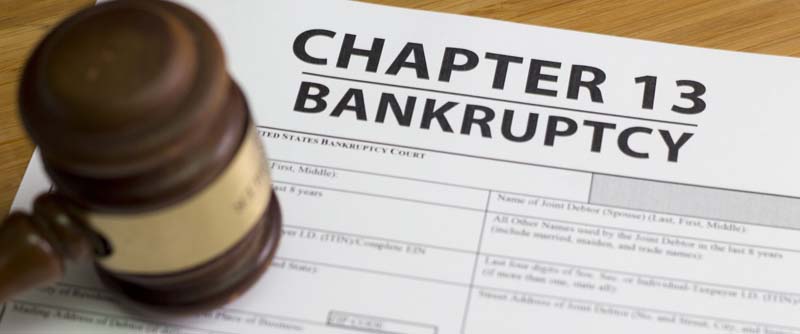Chapter 13 Bankruptcy
Chapter 13 Bankruptcy
Bankruptcy Law – Chapter 13 Bankruptcy

Benefits and Disadvantages of Arizona Chapter 13 Bankruptcy
A Chapter 13 bankruptcy has many advantages for the right kind of debtor, and it has a few disadvantages compared to a Chapter 7. First, it is more complicated and costly than a Chapter 7. It requires the debtor to have some disposable income to pay into a Chapter 13 Plan. Disposable income is defined as income left over after paying for one’s basic necessities, such as food and shelter. The Plan requires these payments to be made for 3 to 5 years. If a debtor’s monthly income is below the state average for a household of his/her size, or the debtor needs bankruptcy protection but has sufficient disposable income to pay all his unsecured creditors in 3 years, the Plan can be for 3 years. Absent these conditions, the length of the Plan is generally for 5 years. This is a long time compared to a Chapter 7, which is generally finished between 6 and 12 months.
However, a Chapter 13 bankruptcy allows the debtor to keep some or all of his or her non-exempt assets. For debtors who have disposable income and have worked had to accumulate non-exempt assets, this is a huge benefit. To keep non-exempt assets, the Plan must ensure that unsecured creditors receive as much under the Plan as they would in a Chapter 7 liquidation.
Another benefit of a Chapter 13 bankruptcy is that it will allow the debtor to catch up with mortgage payments or car payments through the Chapter 13 Plan if he or she has fallen behind in making these payments.
More importantly, if the debtor’s home has a principal mortgage and a second mortgage on it, and the fair market value of the home is equal to or less than the principal mortgage, so that there is no value in the home for the second mortgage to attach to, the lien imposed by the second mortgage can be stripped from the home through a process called “lien stripping.”
Related: Differences Between Lien Stripping and Lien Avoidance
Still another benefit is that Chapter 13 will allow a secured debt such as a car loan to be “crammed down” to its present fair market value at a lower interest rate, called the “Till rate,” named after the bankruptcy case that established the rule. To qualify for a cram down, the car must have been purchased outside of 910 days prior to the date the petition was filed. For example, if the car was purchased 911 days or more before the filing date, the bankruptcy code allows the car note to be divided into a secured and unsecured claim, based on the fair market value of the car on the date of filing. The secured portion of the claim will be paid by the Chapter 13 trustee through the Chapter 13 Plan, and the unsecured portion will receive a share, along with other unsecured creditors, according to what the Plan allows, while the rest of the debt will be discharged at the end of the case. This is a significant benefit, considering that most cars depreciate in value as soon as they are driven off the dealer’s lot.
Chapter 13 has significant benefits that allow a debtor with sufficient disposable income to reorganize his or her financial situation.
Start Your Chapter 13 Bankruptcy Case Today
During our initial consultation, we will help you review your financial situation, assess your options and choose the best course of action for you and your family. To learn more, contact us via Email or by phone at 602-275-3238 to arrange a consultation.to schedule an appointment.
Additional Info
Need Legal Help?
If you need legal assistance with matters related to Immigration and/or Bankruptcy, contact us today to schedule a consultation.
Arizona Cities We Serve
Phoenix
Bullhead City
Cottonwood
Flagstaff
Lake Havasu
Prescott
Prescott Valley
Sedona
Considering Bankruptcy?
If you are seriously considering Bankruptcy as an option to get out from under your debt,
contact us today to schedule a consultation.
